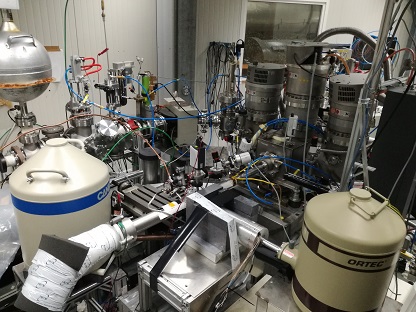D(p,γ)3He
PI: Francesca Cavanna
Astrophysical Motivation:
The Big Bang Nucleosynthesis (BBN) is sensitive to the physics of the early universe and the abundance of light primordial elements can be used to test the standard model of modern cosmology and particle physics. The primordial abundance of deuterium, in particular, can provide stringent constraints on the baryon density and the number of relativistic particles in the early. Recent astronomical observations of primordial deuterium abundance have reported values with a 1% uncertainty. By contrast, theoretical BBN calculations are still hindered by relatively large uncertainties.
Experimental Aim:
In order for BBN predictions to achieve the same precision as observations, the D(p,γ)3He cross section, the least well-known of all reactions involved in the nucleosynthesis of primordial deuterium, must be determined with a systematic uncertainty better than 3% at energies relevant to BBN.
Experimental Setup:
The experimental setup consisted in a windowless gas target with a scattering chamber filled with deuterium gas and two germanium detectors mounted in close geometry. The two detectors were used to measure the gamma detection efficiency with the gamma-gamma coincidence technique. For the measurement of the cross-section only the largest detector has been used, covering the energy range 30-300 keV (center of mass frame) of interest for BBN.
Publications:
- Setup commissioning for an improved measurement of the D(p,γ)3He cross section at Big Bang Nucleosynthesis energies
European Physical Journal A 56 (2020) 144
- The baryon density of the Universe from an improved rate of deuterium burning
Nature 587 (2020) 210-213


